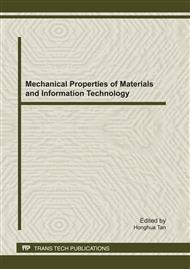p.143
p.149
p.156
p.161
p.167
p.173
p.177
p.181
p.187
Design of a Dynamic Magnetic Field Steered Cathodic Arc Source in Arc Ion Plating
Abstract:
In this work, a dynamic arched magnetic field steered arc source was deigned by virtue of Finite Element Method (FEM) calculation. The magnetic field was produced by two main electromagnetic coils so that the magnetic field can be adjusted with the help of the two current I1 and I2, where I1 is the current to the internal coil mounted coaxially in a magnetic yoke generating a static arched magnetic field to confine the cathode spots and I2 is the current to the external coil mounted coaxially outside the above yoke adjusting the position of the vertex of arch. Base on the results of simulation, it was found this design enable the sweeping of the arc spots on the target surface by means of adjusting the ratio of current (I1/ I2) , and cause the arc distribute evenly on the cathode surface in the diffuse arc mode transferred from the constricted arc mode. The effects of the target thickness and current ratio on the configuration and intensity of dynamic arched magnetic field were investigated. The optimized operating modes was proposed and discussed.
Info:
Periodical:
Pages:
167-172
Citation:
Online since:
September 2011
Authors:
Keywords:
Price:
Сopyright:
© 2012 Trans Tech Publications Ltd. All Rights Reserved
Share:
Citation:


